How does sorghum compare with other grains in terms of protein, antioxidants, and micronutrients? And the benefits of red sorghum compared to black and white varieties?
Sorghum is “the Forgotten Grain.” The United States is the top producer of sorghum, “but it is typically not used to produce food for American consumers.” Instead, it’s used mainly “to produce livestock feed, pet foods, household building materials…but it is a preferred grain for human diets in other parts of the world, such as Africa and Asia.” There, it’s been a staple and eaten for thousands of years, making it currently the fifth most popular grain grown after wheat, corn, rice, and barley, beating out oats and rye.
Because sorghum is gluten-free and “can be definitively considered safe for consumption by people with celiac disease,” we’re starting to see it “increasingly used” as actual human food in the United States, so I decided to look into just how healthy it might be. As you can see below and at 0:59 in my video Is Sorghum a Healthy Grain?, it is comparable to other grains when it comes to protein.
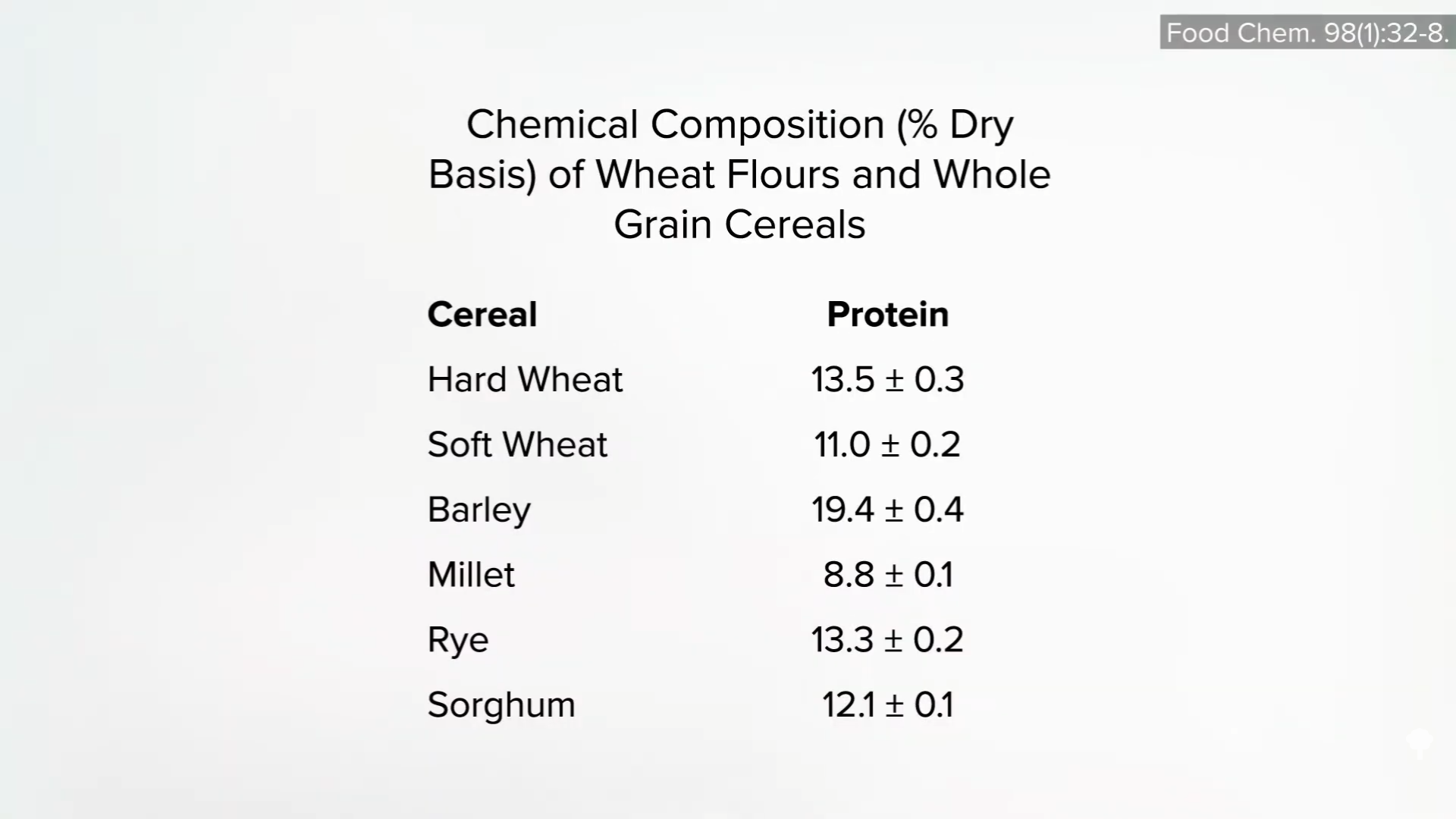
Since when do we have to worry about getting enough protein, though? Fiber is what Americans are desperately deficient in, and sorghum does pull towards the front of the pack, as seen here and at 1:06 in my video.
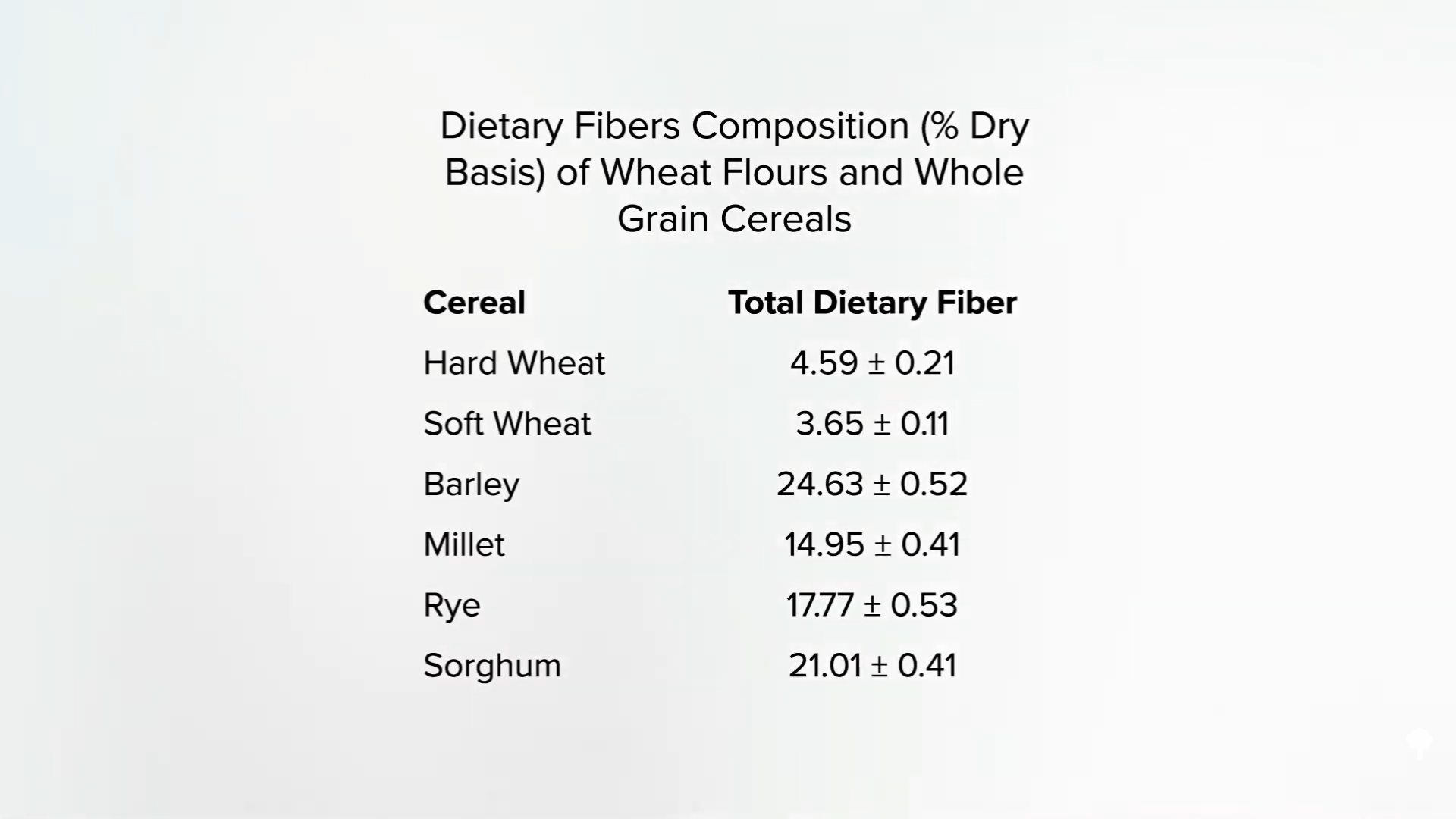
The micronutrient composition is relatively “unremarkable, relative to other cereal grains.” As shown below and at 1:15 in my video, you can see how it rates on minerals, for example.
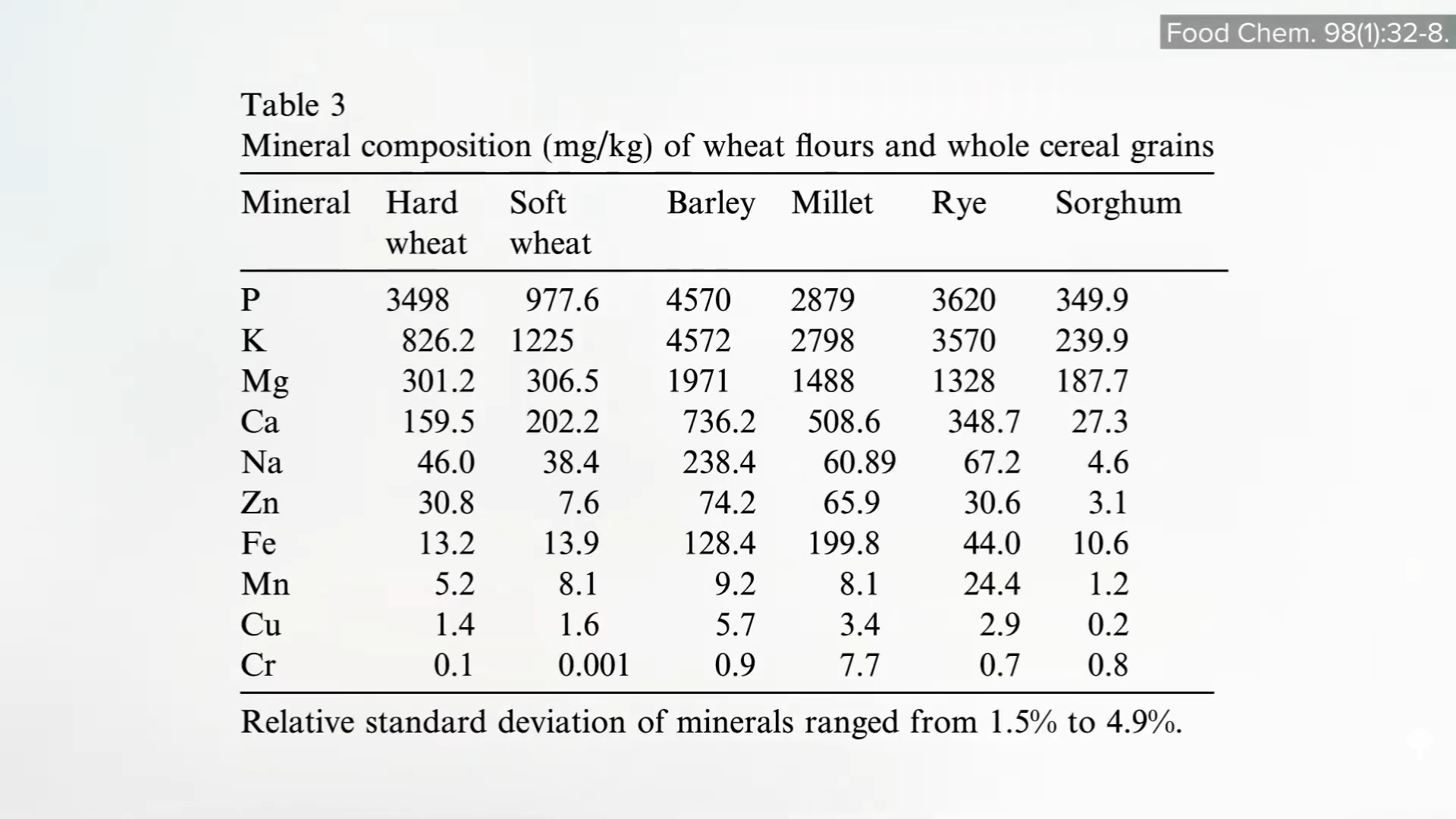
Where sorghum shines is its polyphenol content. Polyphenols are plant compounds and “their regular consumption has been associated with a reduced risk of a number of chronic diseases, including cancer, cardiovascular disease (CVD), and neurodegenerative disorders.” It’s also been shown to have “a protective effect…on all-cause mortality.” If you compare different grains, sorghum really does pull ahead, helping to explain why its antioxidant power is so much higher, as seen here and at 1:40 in my video.
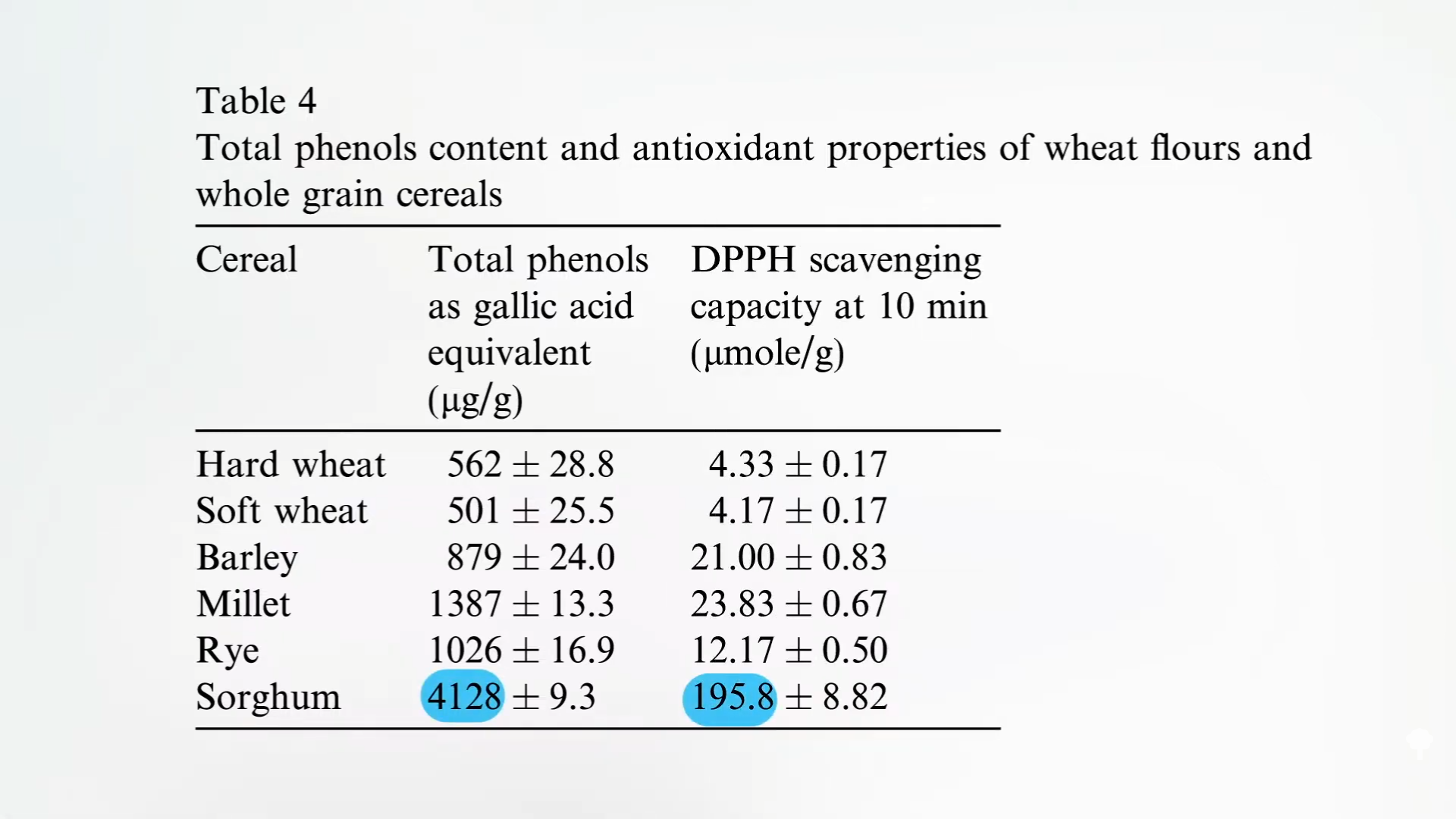
Now, sorghum gets its grainy butt kicked by fruits and vegetables, but when compared to other grains, a sorghum-based breakfast cereal, for example, might have about eight times the antioxidants than a whole wheat-based one. What we care about, though, isn’t antioxidant activity in a test tube, but antioxidant activity within our body.
If you measure the antioxidant capacity of your blood after eating regular pasta, it goes up a little. If you replace 30 percent of the wheat flour with sorghum flour, it doesn’t go up much higher. But, if you eat 30 percent red sorghum flour pasta, the antioxidant capacity in your bloodstream shoots up about 15-fold, as seen below and at 2:22 in my video.


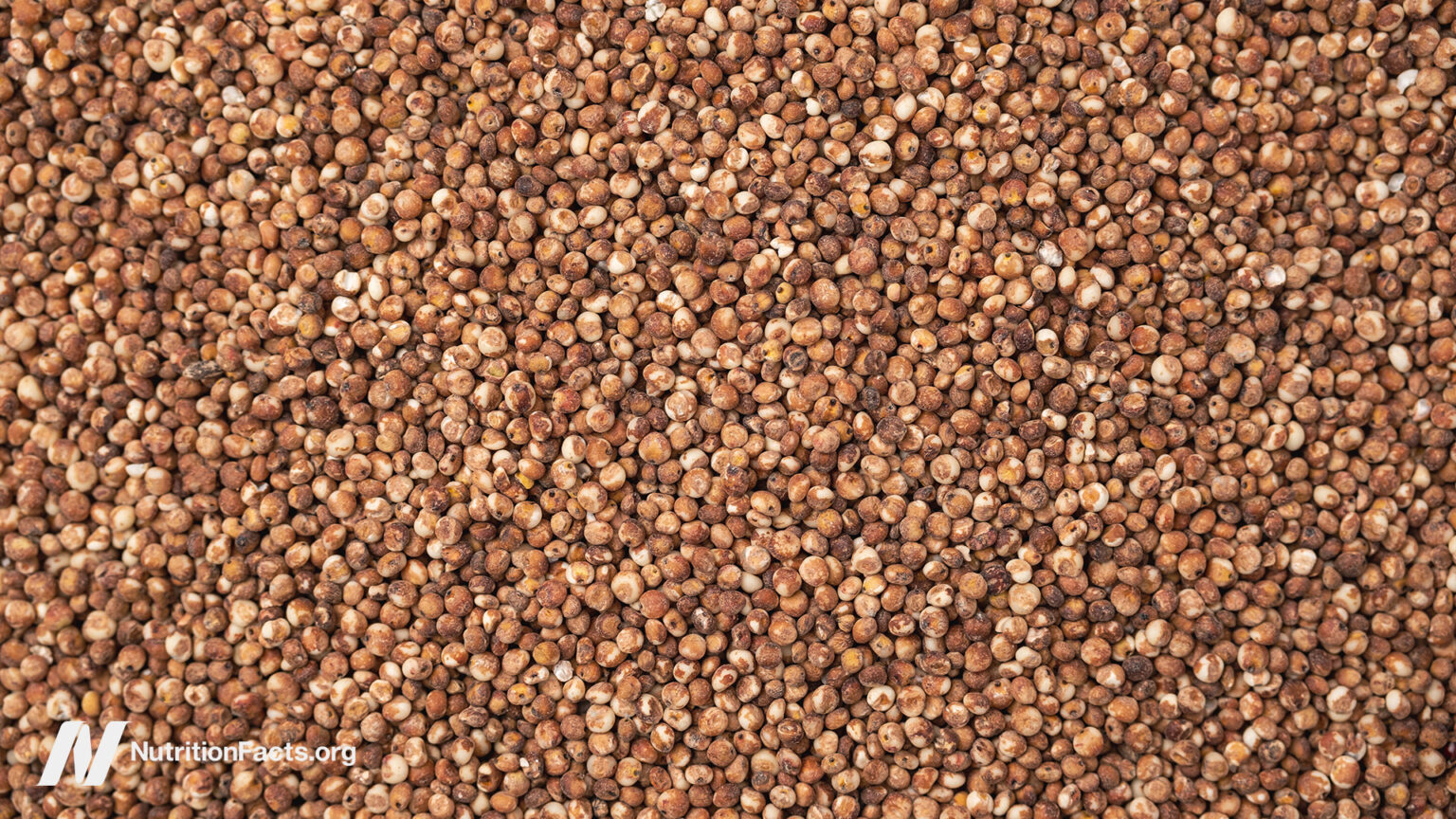












Leave A Comment
Your email address will not be published. Required fields are marked.